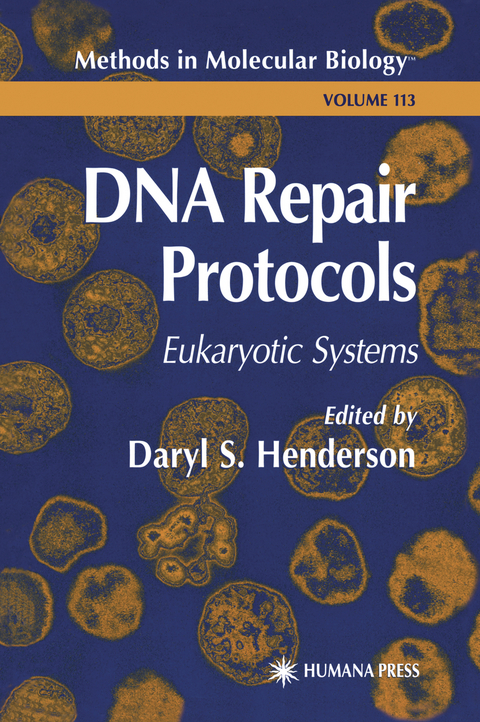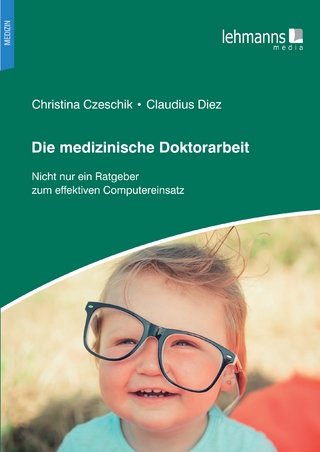
DNA Repair Protocols
Humana Press Inc. (Verlag)
978-0-89603-590-4 (ISBN)
The field of eukaryotic DNA repair is enjoying a period of remarkable growth and discovery, fueled by technological advances in molecular biol- ogy, protein biochemistry, and genetics. Notahle achievements include the molecular cloning of multiple genes associated with classical human repair disorders, such as xeroderma pigmentosum, Cockayne syndrome, and ataxia telangiectasia; elucidation of the core reaction of nucleotide excision repair (NER); the discovery that certain NER proteins participate not only in repair, but also in transcription; recognition of the crucial role played by mismatch repair processes in maintenance of genome stability and avoidance of cancer; the findings that the tumor suppressor protein p53 is mutated in many types of cancer, and has a key role in directing potentially malignant, genotoxin-dam- aged cells towards an apoptotic fate; and the discovery and elaboration of DNA darnage (and replication) checkpoints, which placed repair phenomenol- ogy firmly within a cell-cycle context. Of course, much remains to be learned about DNA repair.
Tothat end, DNA Repair Protocols: Eukaryotic Systems is about the tools and techniques that have helped propel the DNA repair field into the mainstream of biological research. DNA Repair Protoco/s: Eukaryotic Systems provides detailed, step-by- step instructions for studying manifold aspects of the eukaryotic response to genomic injury. The majority of chapters describe methods for analyzing DNA repair processes in mammalian cells. However, many ofthose techniques can be applied with only minor modification to other systems, and vice versa.
I. Mutant Isolation and Gene Cloning.- 1 Isolation of DNA Structure-Dependent Checkpoint Mutants in S. pombe.- 2 Isolating Mutants of the Nematode Caenorhabditis elegans That Are Hypersensitive to DNA-Damaging Agents.- 3 Isolating DNA Repair Mutants of Drosophila melanogaster.- 4 Generation, Identification, and Characterization of Repair-Defective Mutants of Arabidopsis.- 5 Screening for ?-Ray Hypersensitive Mutants of Arabidopsis.- 6 Isolation of Mutagen-Sensitive Chinese Hamster Cell Lines by Replica Plating.- 7 Strategies for Cloning Mammalian DNA Repair Genes.- 8 Novel Complementation Assays for DNA Repair-Deficient Cells: Transient and Stable Expression of DNA Repair Genes.- II. Recognition and Removal of Inappropriate or Damaged DNA Bases.- 9 The Use of Electrophoretic Mobility Shift Assays to Study DNA Repair.- 10 Mismatch Repair Assay.- 11 Measurement of Activities of Cyclobutane-Pyrimidine-Dimer and (6-4)-Photoproduct Photolyases.- 12 A Dot Blot Immunoassay for UV Photoproducts.- 13 Measurement of UV Radiation-Induced DNA Damage Using Specific Antibodies.- 14 Quantification of Photoproducts in Mammalian Cell DNA Using Radioimmunoassay.- 15 Monitoring Removal of Cyclobutane Pyrimidine Dimers in Arabidopsis.- 16 DNA Damage Quantitation by Alkaline Gel Electrophoresis.- 17 The Comet Assay (Single-Cell Gel Test): A Sensitive Genotoxicity Test for the Detection of DNA Damage and Repair.- 18 Measuring the Formation and Repair of UV Photoproducts by Ligation-Mediated PCR.- 19 PCR-Based Assays for Strand-Specific Measurement of DNA Damage and Repair I: Strand-Specific Quantitative PCR.- 20 PCR-Based Assays for Strand-Specific Measurement of DNA Damage and Repair II: Single-Strand Ligation-PCR.- 21 Gene-Specific and Mitochondrial Repair of Oxidative DNA Damage.- 22Characterization of DNA Strand Cleavage by Enzymes That Act at Abasic Sites in DNA.- 23 Base Excision Repair Assay Using Xenopus laevis Oocyte Extracts.- 24 In Vitro Base Excision Repair Assay Using Mammalian Cell Extracts.- 25 Nucleotide Excision Repair in Saccharomyces cerevisiae Whole-Cell Extracts.- 26 In Vitro Excision Repair Assay in Schizosaccharomyces pombe.- 27 Nucleotide Excision Repair Assay in Drosophila melanogaster Using Established Cell Lines.- 28 Nucleotide Excision Repair in Nuclear Extracts from Xenopus Oocytes.- 29 Assay for Nucleotide Excision Repair Protein Activity Using Fractionated Cell Extracts and UV-Damaged Plasmid DNA.- 30 Dual-Incision Assays for Nucleotide Excision Repair Using DNA with a Lesion at a Specific Site.- 31 In Vitro Chemiluminescence Assay to Measure Excision Repair in Cell Extracts.- III. DNA Strand Breakage and Repair.- 32 Physical Monitoring of HO-Induced Homologous Recombination.- 33 Use of P Element Transposons to Study DNA Double-Strand Break Repair in Drosophila melanogaster.- 34 Analyzing Double-Strand Repair Events in Drosophila.- 35 Expression of I-Sce I in Drosophila to Induce DNA Double-Strand Breaks.- 36 Use of I-Sce I to Induce DNA Double-Strand Breaks in Nicotiana.- 37 Chromosomal Double-Strand Breaks Introduced in Mammalian Cells by Expression of I-Sce I Endonuclease.- 38 Induction of DNA Double-Strand Breaks by Electroporation of Restriction Enzymes into Mammalian Cells.- 39 In Vitro Rejoining of Double-Strand Breaks in Genomic DNA.- 40 Extrachromosomal Assay for DNA Double-Strand Break Repair.- 41 Use of Gene Targeting to Study Recombination in Mammalian DNA Repair Mutants.- 42 Measurement of Low-Frequency DNA Breaks Using Nucleoid Flow Cytometry.- IV. DNA Damage Tolerance Mechanisms and Regulatory Responses.- 43 Live Analysis of the Division Cycles in X-Irradiated Drosophila Embryos.- 44 Inhibition of DNA Synthesis by Ionizing Radiation.- 45 Analysis of Inhibition of DNA Replication in Irradiated Cells Using the SV40-Based In Vitro Assay of DNA Replication.- 46 Assays of Bypass Replication of Genotoxic Lesions in Mammalian Disease and Mutant Cell-Free Extracts.- 47 Detection of Chromatin-Bound PCNA in Cultured Cells Following Exposure to DNA-Damaging Agents.- 48 Induction of p53 Protein as a Marker for Ionizing Radiation Exposure In Vivo.- 49 Activation of p53 Protein Function in Response to Cellular Irradiation.- 50 Selective Extraction of Fragmented DNA from Apoptotic Cells for Analysis by Gel Electrophoresis and Identification of Apoptotic Cells by Flow Cytometry.- 51 Detection of DNA Strand Breakage in the Analysis of Apoptosis and Cell Proliferation by Flow and Laser Scanning Cytometry.- 52 Immunoassay for Single-Stranded DNA in Apoptotic Cells.
"...It will serve as an essential reference for both the practical and theoretical aspects of DNA repair studies, encourage the transfer of methodologies between model systems, and stimulate the development of new approaches." - Anticancer Research
| Erscheint lt. Verlag | 21.6.1999 |
|---|---|
| Reihe/Serie | Methods in Molecular Biology ; 113 |
| Zusatzinfo | 72 Illustrations, black and white; XXI, 641 p. 72 illus. |
| Verlagsort | Totowa, NJ |
| Sprache | englisch |
| Maße | 152 x 229 mm |
| Themenwelt | Informatik ► Weitere Themen ► Bioinformatik |
| Naturwissenschaften ► Biologie ► Biochemie | |
| Naturwissenschaften ► Biologie ► Genetik / Molekularbiologie | |
| Naturwissenschaften ► Biologie ► Mikrobiologie / Immunologie | |
| Naturwissenschaften ► Biologie ► Zellbiologie | |
| ISBN-10 | 0-89603-590-5 / 0896035905 |
| ISBN-13 | 978-0-89603-590-4 / 9780896035904 |
| Zustand | Neuware |
| Haben Sie eine Frage zum Produkt? |
aus dem Bereich


